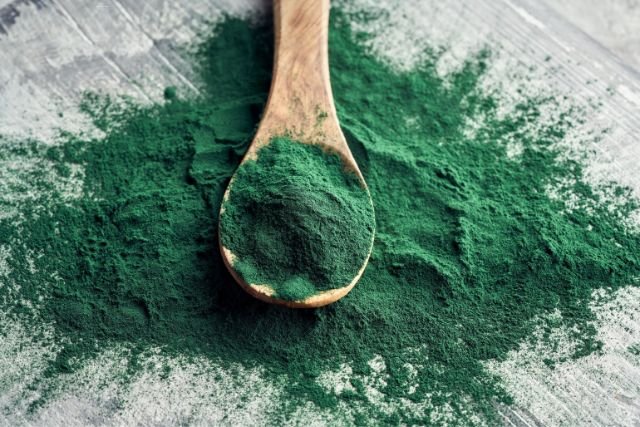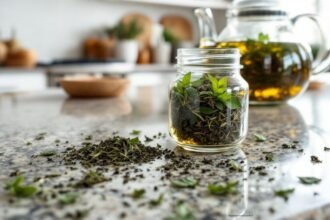If you’re searching for natural ways to ease pain, boost energy, and reclaim your life, you’ve probably heard about spirulina. This blue-green algae is making waves in 2025 for its potential to help fibromyalgia sufferers. But what’s the real story? Let’s dive into the latest research, rewards, and risks, so you can make empowered choices for your health.
What is Spirulina and Why is It Trending?
Spirulina is a nutrient dense algae packed with protein, vitamins, and minerals. It’s been called a superfood for years, but new research in 2025 is shining a spotlight on its unique benefits for chronic conditions like fibromyalgia. People are adding it to smoothies, taking it in capsules, and even using it in energy bars.
Why the hype now? More studies are revealing how spirulina’s anti-inflammatory and antioxidant properties may directly address the root issues of fibromyalgia, such as chronic pain, fatigue, and brain fog.
The Rewards: How Spirulina May Help Fibromyalgia Sufferers
1. Reducing Pain and Inflammation
Pain is at the heart of fibromyalgia. Spirulina contains phycocyanin, a powerful plant protein with anti-inflammatory and antioxidant effects. This compound may help reduce the widespread inflammation that often triggers fibromyalgia pain. In fact, a 2025 study found that daily spirulina supplementation led to significant improvements in pain and other symptoms for people with fibromyalgia.
2. Boosting Energy and Fighting Fatigue
Fatigue is another major struggle. Spirulina’s high protein and vitamin B1 content can help fuel your body and support healthy energy levels. Spirulina delivers sustained energy without the jitters or crashes similar to caffeine. Many users report feeling more alert and less exhausted after adding to their routine.
3. Supporting Muscle Recovery
Muscle pain and tenderness are common with fibromyalgia. Spirulina’s amino acids aid muscle repair and recovery, which can be especially helpful if you’re trying gentle exercise or physical therapy. This support may help you stay active and reduce post exertion malaise.
4. Improving Sleep and Mood
Poor sleep and mood swings go hand in hand with fibromyalgia. Recent research highlights spirulina’s potential to improve sleep quality and reduce depression. Some people notice better sleep within a few weeks of starting spirulina, while mood improvements may take a bit longer.
5. Supporting Immune Function
Fibromyalgia can leave you feeling run down. Spirulina’s antioxidants and nutrients help strengthen your immune system, making it easier to fight off infections and bounce back from illness.
The Science: Latest Research on Spirulina for Fibromyalgia
Science is catching up with what many have suspected. In 2025, several studies confirmed spirulina’s benefits for fibromyalgia:
- A clinical trial found that spirulina supplementation improved pain, fatigue, and cognitive symptoms in fibromyalgia patients over several weeks.
- Another study reported that spirulina improved sleep quality and reduced depression, two of the most stubborn symptoms of fibromyalgia.
- Smaller studies and anecdotal reports suggest spirulina’s prebiotic effects may also help balance gut health, which is increasingly linked to fibromyalgia symptoms.
These findings are promising, but researchers agree: spirulina works best as part of a holistic approach. Diet, exercise, and stress management remain essential.
Side Effects and Precautions: What You Need to Know
No supplement is perfect. While spirulina is generally safe for most people, it’s important to be aware of possible side effects and risks.
Common Side Effects
- Mild digestive issues (nausea, bloating, or diarrhea)
- Headaches or dizziness (rare)
- Allergic reactions (especially if you have a history of allergies to algae or seafood)
These effects are usually mild and temporary. Starting with a low dose and increasing gradually can help your body adjust.
Who Should Avoid Spirulina?
- People with autoimmune diseases: Spirulina may stimulate the immune system, which can worsen conditions like lupus or rheumatoid arthritis.
- Those with phenylketonuria (PKU): Spirulina contains phenylalanine, which must be avoided in PKU.
- Pregnant or breastfeeding women: Safety is not fully established.
- Anyone taking blood thinners or immune suppressing medications: Talk to your doctor first.
Quality Matters
Not all spirulina is created equal. Contaminated or low quality products can contain toxins or heavy metals. Always choose from reputable brands that test for purity and safety.
Why Understanding Spirulina is Crucial
The supplement world is full of hype. Now is the time when being informed is your best defense against wasted money and false hope. Here’s why it matters:
1. Personalized Health Decisions
Fibromyalgia is complex. By understanding spirulina’s benefits and risks, you can make choices that fit your unique needs and health goals.
2. Avoiding Pitfalls
Misinformation spreads fast online. Knowing the facts helps you avoid scams, unsafe products, and unrealistic expectations.
3. Empowerment Through Knowledge
When you understand your options, you feel more in control. This confidence can make a big difference in how you manage your health and interact with your care team.
The Power of Community: Why You’re Not Alone
Living with fibromyalgia can feel isolating. But you’re part of a growing community of people seeking answers and sharing experiences. Here’s how connecting with others can help:
- Sharing tips and success stories can inspire hope and new ideas.
- Learning from others’ experiences with spirulina can help you set realistic expectations.
- Support groups and online forums offer encouragement and accountability.
Together, you can celebrate progress, troubleshoot setbacks, and build resilience.
How to Start with Spirulina: Tips for Fibro Sufferers
Ready to try spirulina? Here’s how to get started safely and effectively:
- Talk to your healthcare provider before adding any new supplement, especially if you take medications or have other health conditions.
- Start with a low dose (such as 500 mg per day) and increase slowly as tolerated.
- Choose high quality spirulina from trusted brands that test for contaminants.
- Monitor your symptoms and keep a journal to track changes in pain, energy, sleep, and mood.
- Pair spirulina with other healthy habits like balanced eating, gentle movement, and stress reduction for best results.
Frequently Asked Questions
How long does it take to see results?
Some people notice improvements in sleep, appetite, or mood within 1-2 weeks. Full benefits may take 4-6 weeks.
Is spirulina safe for long term use?
Most studies suggest spirulina is safe for long term use when taken as directed. However, ongoing research is still needed, especially for people with chronic conditions.
Can I take spirulina with my medications?
Spirulina may interact with certain medications. Always check with your doctor or pharmacist before starting.
The Bottom Line: Spirulina for Fibromyalgia
Spirulina is more than a trendy superfood. For fibromyalgia sufferers, it offers real hope for easing pain, boosting energy, and improving quality of life. The latest research in 2025 supports its benefits, especially when combined with a healthy lifestyle and informed choices.
Understanding spirulina, its rewards, risks, and role in your wellness journey empowers you to make decisions that truly support your health. And remember, you’re not on this journey alone. By connecting with others and staying informed, you can turn hope into action and take meaningful steps toward relief.
If you’re ready to explore spirulina, start small, stay curious, and celebrate every victory.










